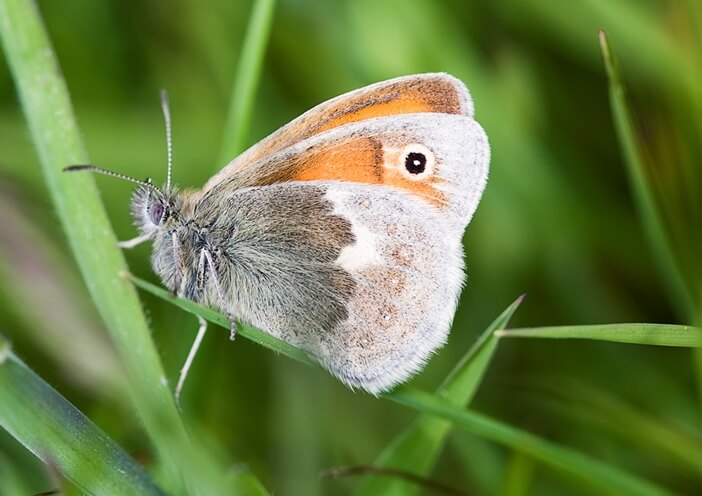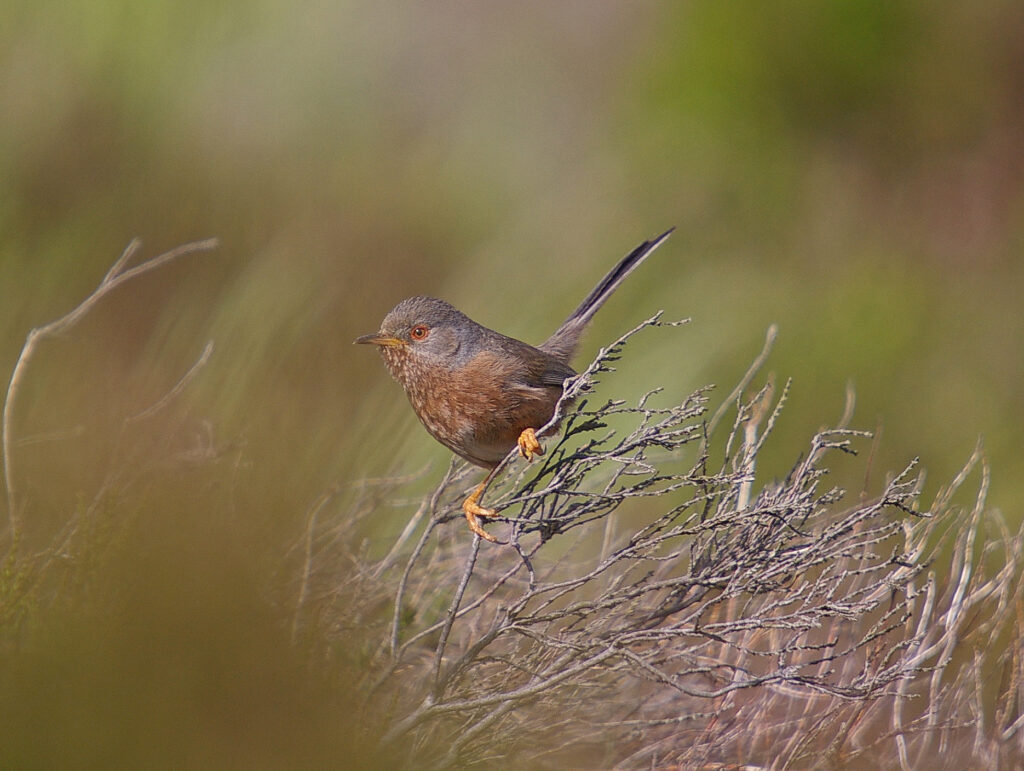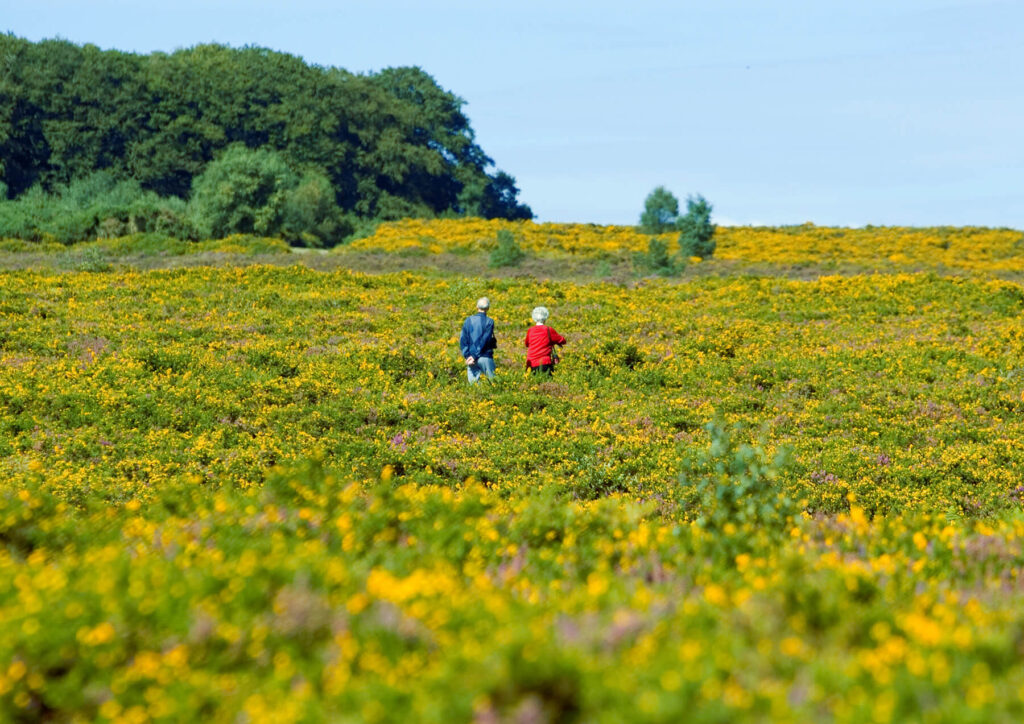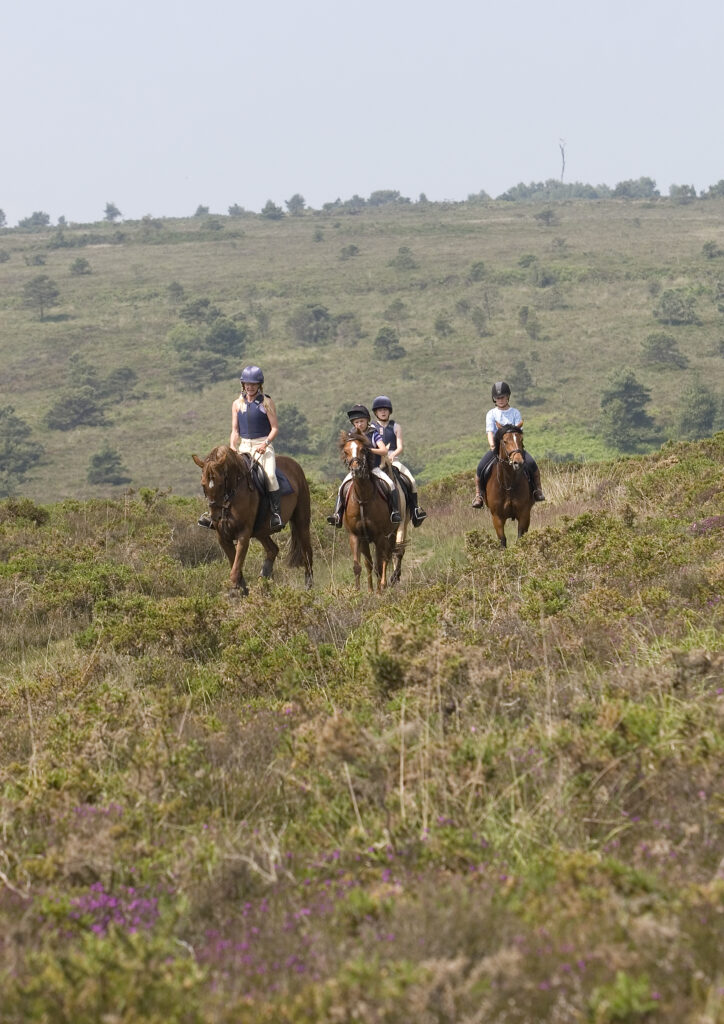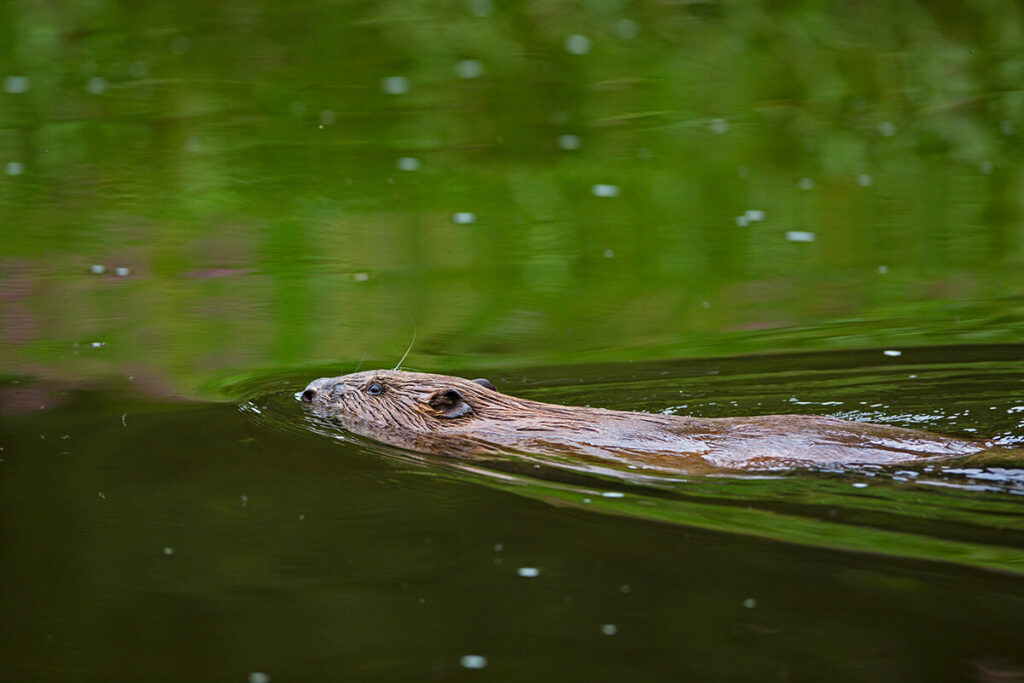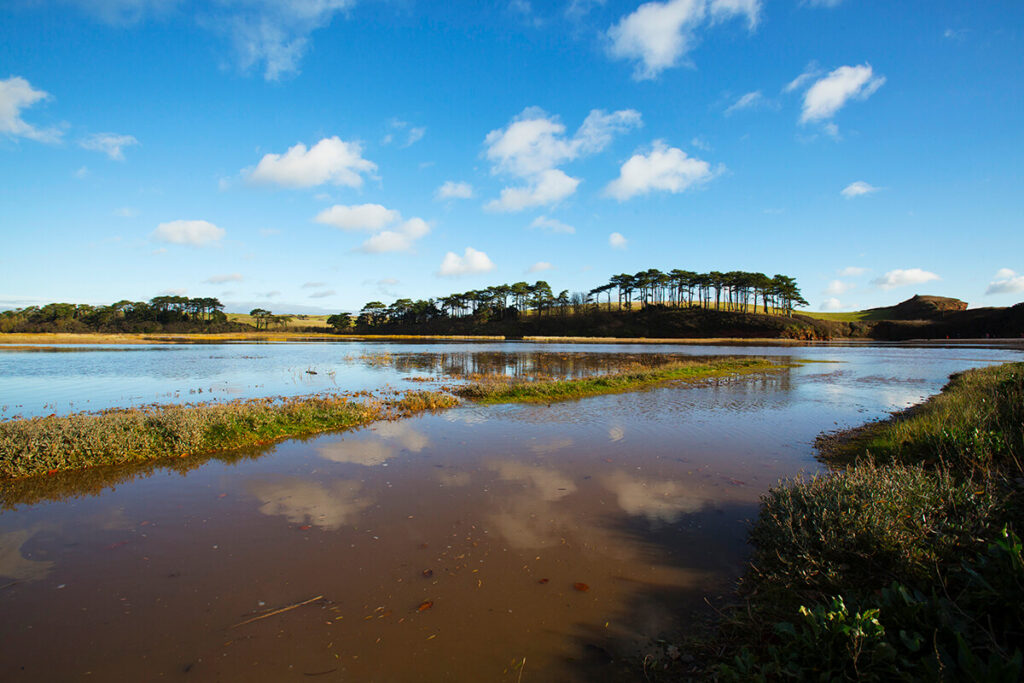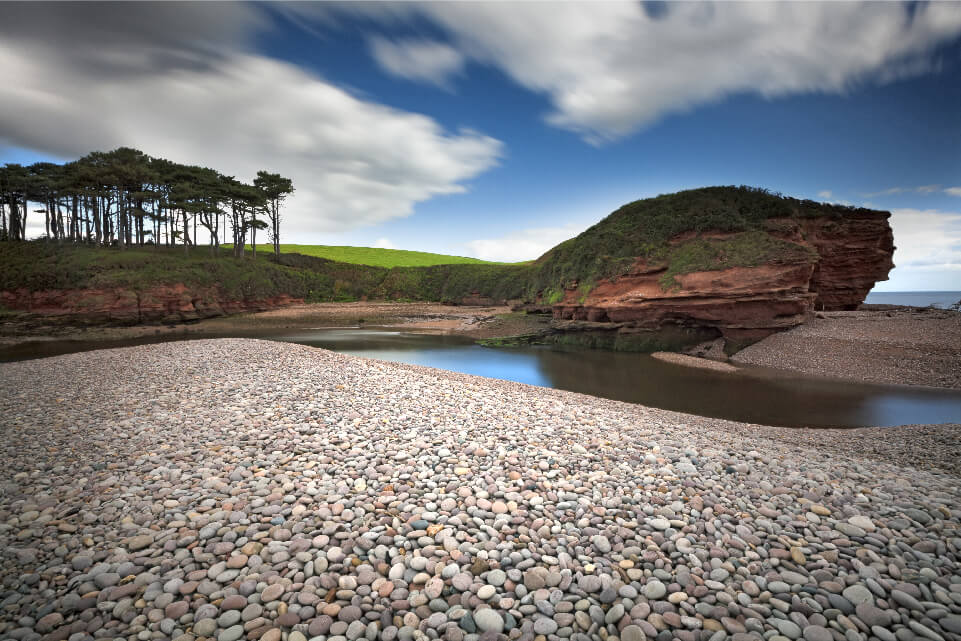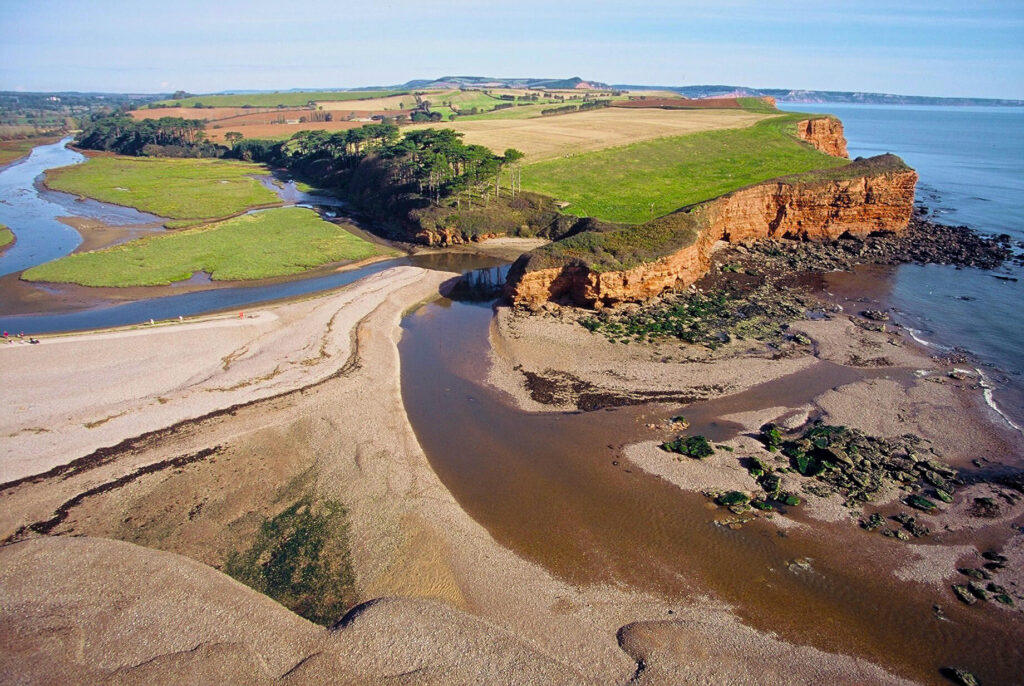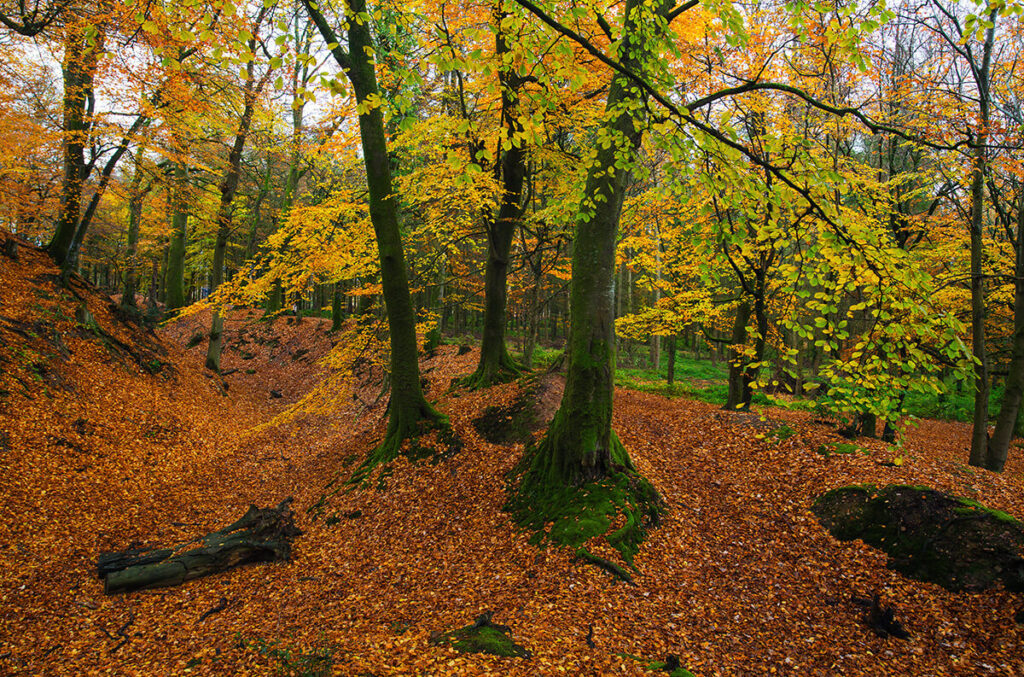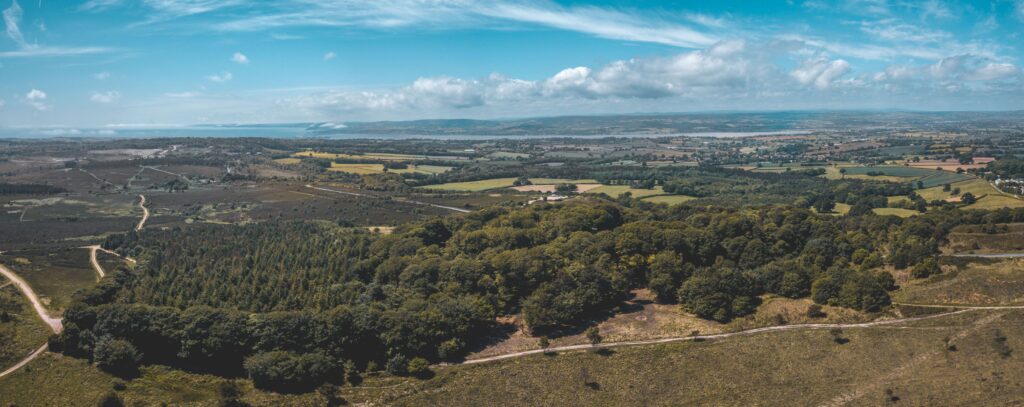Conservation, wildlife and access

by understanding, conserving and enhancing the wildlife we manage
by securing a sustainable model of conservation management based on sound science
by providing free and public access to this land, wherever possible
The key conservation focus of the Estate since the 1990s has been the East Devon Pebblebed Heaths. The rarity of the habitats and the richness of the wildlife have earned the core area of the heaths important European and national conservation designations. These include Site of Special Scientific Interest (SSSI), Special Protection Area (SPA) and Special Area of Conservation (SAC).
In 2006 the Estate established its own conservation charity, the East Devon Pebblebed Heaths Conservation Trust, to oversee the management of this site.
The Pebblebed Heaths are by no means the only area of conservation importance, or significant element of ‘Natural Capital’ for which the Estate is responsible. Within its boundaries lie additional European sites of conservation interest, three further SSSIs and 18 County Wildlife Sites (CWSs). All statutory and non-statutory (County Wildlife) sites combined cover 1,462 hectares, or 14% of the Estate’s land holdings.
In addition, the broader non-designated working landscape supports a range of habitats of high conservation worth. These include sea cliffs, streams, rivers, ponds, woodland, parkland, orchards, hedgerows, wetland, salt marsh and species-rich grassland. They support a high diversity of protected and non-protected species, as well as delivering a range of provisioning (e.g. food), regulating (e.g. purification of water), cultural (recreation) and supporting (crop pollination) services for broader society.
The Estate recognises that to truly deliver landscape-scale conservation, on a scale demanded by society, wildlife conservation must not be restricted to discrete reserves, however large, but embedded across all aspects of Estate business. The biggest gains for wildlife in the countryside will be achieved through appropriate management of our in-house, share and tenanted farms (8,000 hectares) and woodlands (1,800 hectares). It is across the broader Estate that we can achieve the connectivity and resilience our species and habitats require.
What we do and why
Our Wildlife Vision:
‘To embed wildlife improvement into all business activities and hand over to future generations a countryside more diverse, resilient, functional, and ecologically valuable than we have today’.
Delivery of our vision will be through improvements in business decision-making, increased internal and external investment, and through partnership working.
The economic rationale of our Wildlife Strategy is that we recognise that society and government will increasingly demand higher levels of transparency and improved environmental delivery from all businesses. The Estate trades on its reputation, and we believe that the investment we make now will be matched by financial returns through enhanced and sustained environmental performance, protection of the Natural Capital on which our business depends and strengthened business reputation and brand in the market place.
Key Strategic Priorities:
- Improve the quality of baseline habitat and wildlife data across the Estate
- Secure funding and attain favourable status for the East Devon Pebblebed Heaths
- Strengthen management of statutory (SAC/SPA/SSSI) and non-statutory (CWS) wildlife sites
- Develop collaborative strategic, landscape-scale partnerships with tenants, adjacent landowners and environmental bodies
- Enhance our woodlands for wildlife, including changing management from clear felling to continuous cover systems where appropriate
- Improve integrated spatial planning of wildlife delivery, including enhancement of landscape connectivity
- Investigate the environmental, social and financial costs and benefits of re-connecting the River Otter to its floodplain to ensure more sustainable management and improved wildlife provision and public access in the face of climate change
- Strengthen invasive species control, including of Grey Squirrels
- Develop new models of business decision-making that reflect the true value of Natural Capital
- Introduce environmental benchmarking of farms as Key Performance Indicators
- Develop species and habitat-specific project opportunities with external partners
- Monitor and improve the extent, connectivity and quality of hedgerows
- Strengthen collaboration with citizen scientist and wildlife interest groups
- Strengthen public engagement on wildlife management in the countryside
EAST DEVON PEBBLEBED HEATHS
Prior to the establishment of the Pebblebed Heaths Conservation Trust in 2006 the heathlands were managed by Clinton Devon Estates’ staff for conservation and recreation.
The formation of the Conservation Trust has ensured that a modern approach is taken, and that the appropriate governance and expertise are in place to maximise the effectiveness of conservation work and public education.
Overall governance of the Conservation Trust is overseen by a Board of Trustees and Directors of the associated Land Management Company.
HABITATS AND NATURAL CAPITAL
The Pebblebed Heaths have been occupied by people since at least the Bronze Age, when turf cutting, burning and grazing helped turn the once densely wooded area into the sweeping open landscape that we love today.
Though only semi-natural, heathlands have high wildlife value and support species that are rarely found elsewhere. Without continued management and protection, this threatened habitat can quickly revert to scrub and, ultimately, to woodland.
Whilst scrub and woodland also have a significant wildlife value, heathlands are now so rare in Europe that there is a particular need to protect those few areas that remain to ensure the survival of this distinctive landscape, as well as the specialised species that depend on this habitat.
Conserving biodiversity is more than protecting the variety of species on earth; it is about protecting the habitats that support them too. We undertake a wide range of work to ensure that this unique environment continues to thrive and can be enjoyed by generations long into the future.
access
Under the Countryside and Rights of Way (CROW) Act, the public have full and free access to all areas of the Pebblebed Heaths by foot.
Clinton Devon Estates also applied to Devon County Council to give general permission for horse riders and cyclists to use the heaths, so long as the user acts in accordance with the CROW Act legislation. As a result, horse riding and cycling by individuals is permitted.
The Act excludes horse-riding, cycling, vehicles, organised games or any activity for commercial gain. For full details of what is and is not permitted on the Pebblebed Heaths and the legislation that protects the heaths, please click on the link below.
Projects
CONSERVATION SITES
The Pebblebed Heaths are amongst the most important conservation sites in Europe due to the rarity of the habitats and species found. Covering over 1,400 hectares, the Pebblebed Heaths comprise the single biggest expanse of lowland heathland in Devon.
The main core of the Pebblebed Heaths are notified as Site of Special Scientific Interest (SSSI), as a nationally important example of Atlantic-climate lowland heathland. The site is also designated as a Special Area of Conservation (SAC) and a Special Protection Area (SPA) under the EU Birds Directive and the EU Habitats Directive due to its support of rare habitats, nightjars, Dartford warblers and the southern damselfly.
The East Devon Area of Outstanding Natural Beauty (AONB) was designated in 1963 and covers all of the Pebblebed Heaths. The AONB Management Strategy recognises the Pebblebed Heaths as a significant landscape feature in East Devon, containing important natural habitats and archaeological features.
otter estuary
The Lower Otter Estuary is a very special place. It provides a habitat for a wide variety of breeding and wintering bird species, whilst being enjoyed by tens of thousands of visitors each year.
This coastal community, however, faces growing challenges due to climate change, like many similar habitats. As the oceans warm up, they take up more space and the sea levels rise, whilst extreme storms and rainfall increase the intensity of erosion, threatening this unique environment.
The Lower Otter Restoration Project aims to work with local people and partner organisations to explore how we can preserve and improve the downstream section of the River Otter, its estuary, and its immediate surroundings for future generations in the face of a rapidly changing climate.
Currently, we are examining the possibility of a managed realignment scheme where the River Otter meets the sea near Budleigh Salterton in East Devon.
The project is being considered because the existing 200-year-old sea defences are now starting to fail and are becoming increasingly hard to maintain. Though this may have an impact on the surrounding infrastructure, it is an important project that is currently under consideration in order to protect the wider environment.
SCHEDULED ANCIENT MONUMENTS
Because of their long history of occupation and use, the Pebblebed Heaths have a rich archaeological history, with over 168 historic features noted in the County Council’s Historic Environment Record:
From the prehistoric peoples who built the large number of barrows and cairns on the heaths, to the military use of the heathlands during World War 2, the footprints of human occupation are evident at every turn across the heaths.
Perhaps the most important archaeological site is Woodbury Castle – one of the most well-known archaeological monuments in all of Devon. The Castle is an Iron Age hillfort, with its impressive ramparts and ditch echoing back to an ancient era upon the heath. Due to its historical interest, Woodbury Castle is designated a Scheduled Monument (SAM No. DV61).
